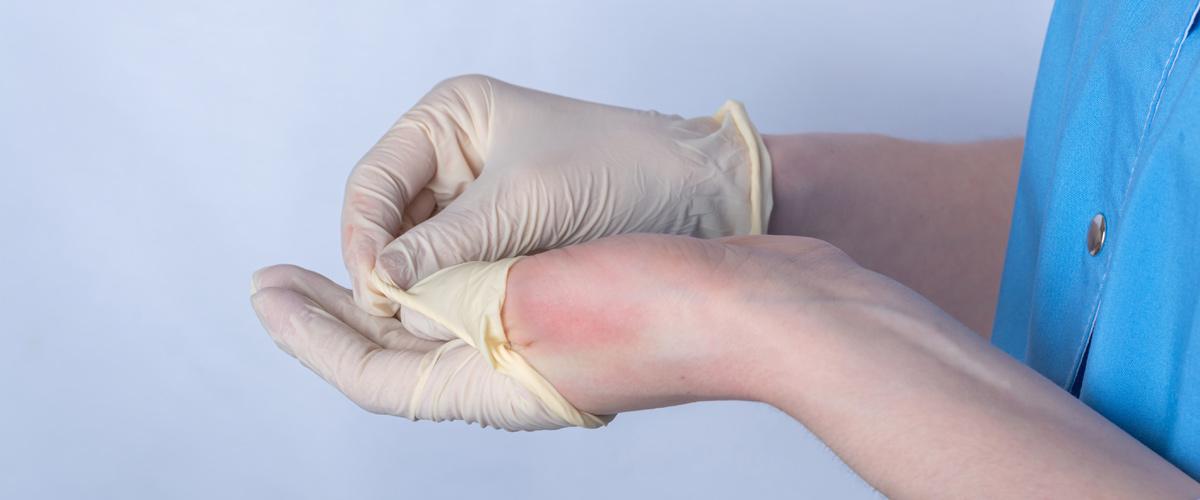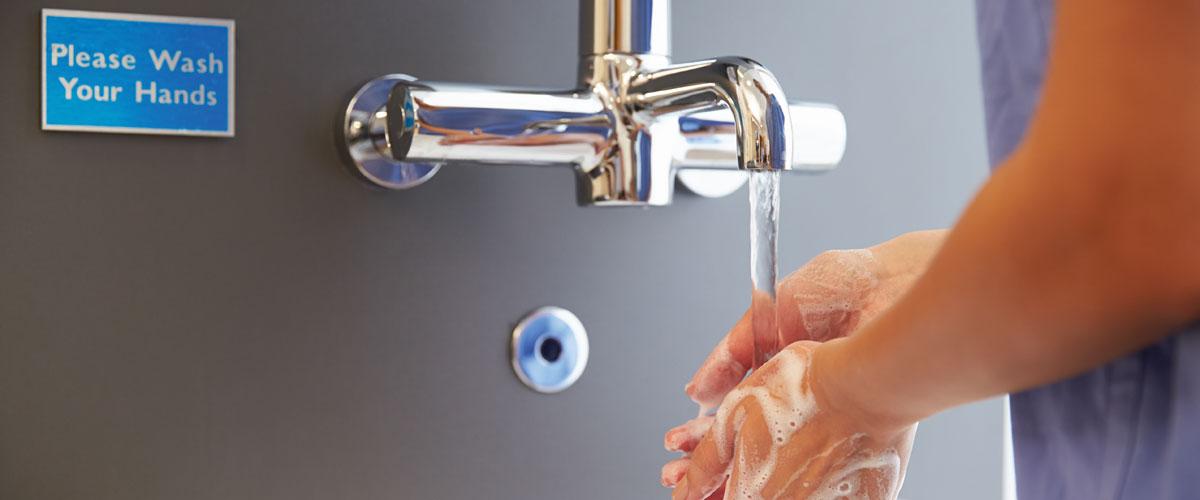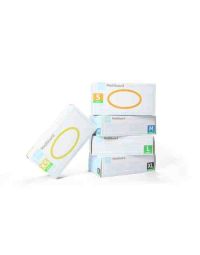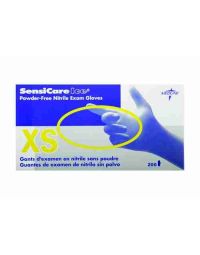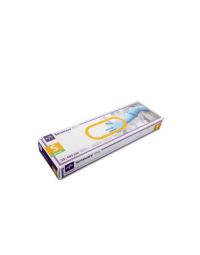One of the primary responsibilities of healthcare workers (HCWs) is to protect themselves and their patients from cross-contamination through blood, urine, and other bodily secretions, thereby helping to prevent the spread of healthcare-associated infections (HAIs). The European Centre for Disease Prevention and Control (ECDC) estimates that, every year, around 3.8 million individuals develop HAIs while receiving treatment in acute care hospitals in Europe. A total of 90,000 patients have died due to the six most common HAIs.¹
Infection prevention and control measures
According to the World Health Organization (WHO)², approximately 80 per cent of HAIs can be prevented through better infection prevention and control measures. Let’s focus on two of these measures:
- Proper hand hygiene/washing hands – This may seem like a small and obvious thing to do, but sometimes, due to their high workload, most HCWs have expressed a lack of energy and/or time to adequately wash their hands.³ However, hand hygiene in hospitals is very important to help prevent HAIs. It also has a great impact on the safety of not only themselves as caregivers, but also of their patients. Ensuring you wash your hands is crucial to the general clinical intention to secure the best possible healthcare outcome. If there is a lack of water and soap, using an alcohol-based sanitiser can also be a good alternative.
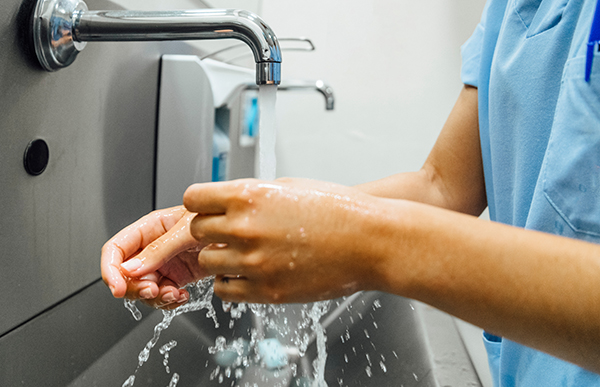

- Wearing disposable examination gloves during care delivery – Non-sterile disposable examination gloves are crucial in helping to protect HCWs from harmful substances.⁴ Choosing the appropriate gloves and following approved protocols for donning, doffing or removal, and changing them are also equally important practices. Wearing them, as a standalone practice, does not mean clean hands. Gloves do not replace aseptic hand washing, as they can become contaminated during use, leading to the spread of HAIs. It is, therefore, still recommended by the Centers for Disease Control (CDC)⁵ and WHO⁶ that you wash or sanitise your hands to help you avoid cross-contamination and HAIs—especially after glove removal.
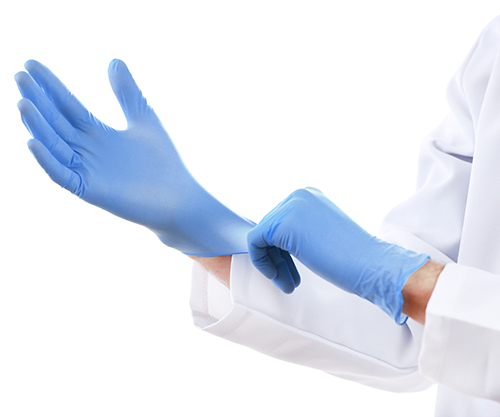

In order to optimise infection prevention as best as possible and help lower the risk of the transmission of HAIs, HCWs need to apply the above-mentioned measures consistently.
Promoting skin health
Did you know that incorrect hand hygiene practices and inappropriate use of disposable examination gloves can lead to serious skin conditions? Over 95 per cent of healthcare professionals reported skin-related issues due to glove use. Common issues include dry, itchy skin, which causes pain and discomfort for healthcare professionals. It is important to acknowledge and understand this issue, in order to be able to find a way to help prevent it from worsening or even happening in the first place. So what are the two main skin conditions that affect HCWs? These include:
- Allergic contact dermatitis – This is an allergic reaction that may be triggered by chemical accelerators used in the production of gloves.
- Irritant contact dermatitis – This is not an allergic reaction, as it may be caused by intense hand hygiene protocols, such as frequent handwashing.
And what are the consequences of these skin issues? These may include:
- Reduced productivity of healthcare staff – Severe cases of dermatitis can result in a negative impact on work productivity.⁷ There is a high possibility of an increase in the number of HCWs who request and eventually go on sick leave for treatment and/or recovery. This may eventually lead to potential job losses in the long term.
- Economic losses – This could include the cost of sick leave, employee retention issues, training and replacement.
- Threat of cross-contamination to patients – The hands of clinicians could be the conduits for and promoters of infections amongst critically ill patients.⁸
What solutions can Medline offer?
Medline has a wide range of high-quality examination gloves to help prevent infections and skin issues. Since it is crucial to choose the appropriate gloves, we have a complete range of gloves for various applications, including options that can be used outside critical care areas, are sterile, heavy-duty, utilise oatmeal technology, and present no risk of allergy development. Our portfolio also includes skin-friendly specialty gloves, such as nitrile accelerator-free and oatmeal-coated gloves to help protect and preserve your hands.
For more information on our exam gloves portfolio, you can check out our online catalogue and Exam Gloves Ordering Guide.
#BeKind to Your Skin
In addition, our #BeKind campaign is in full swing, supporting the above-mentioned insights. Through this campaign, we further highlight the solutions Medline, as a glove supplier, can offer in terms of skin protection and how our measures ensure our workers and environment are respected and protected.
Stay tuned for upcoming articles that explore the ways in which supporting worker and environmental rights are also a part of Medline's DNA. You can view our #BeKind flyer to begin learning more about which glove solution is best for your healthcare context.
Ready to begin optimising? We may be the partner for you and our solutions could fit your needs like a glove! Contact us today.


Fanya Malkan
Product Manager Exam Gloves, Medline Europe
Fanya is an Indonesian expat based in the Netherlands. After completing her Bachelor of Science in International Business Administration, she started her professional career, joining Medline in April 2022. She is currently based in Arnhem, the Netherlands and manages Medline Europe’s exam gloves portfolio. Learn more on LinkedIn.
References:
[1] Health at a glance: Europe 2018’ (2018) Health at a Glance: Europe [Preprint]. doi:10.1787/health_glance_eur-2018-en.
[2]Infection Prevention and Control (2021) World Health Organization. Available at: https://www.who.int/news-room/questions-and-answers/item/infection-prevention-and-control (Accessed: 15 May 2023).
[3] Haque, M. et al. (2020) ‘Strategies to Prevent Healthcare-Associated Infections: A Narrative Overview’, Risk Management and Healthcare Policy, Volume 13, pp. 1765–1780. doi:10.2147/rmhp.s269315.
[4] Hand hygiene (2022) Hand Hygiene Guides & Resources | Medline IE. Available at: https://www.medline.eu/ie/hand-hygiene (Accessed: 01 June 2023).
[5] Hand hygiene in healthcare settings (2023) Centers for Disease Control and Prevention. Available at: https://www.cdc.gov/handhygiene/index.html (Accessed: 01 June 2023).
[6] WHO guidelines on hand hygiene in Health Care (2AD) World Health Organization. Available at: https://www.who.int/publications-detail-redirect/9789241597906 (Accessed: 01 June 2023).
[7] Andersen, L., Nyeland, M.E. and Nyberg, F. (2019) ‘Increasing severity of atopic dermatitis is associated with a negative impact on work productivity among adults with atopic dermatitis in France, Germany, the U.K. and the U.S.A.’, British Journal of Dermatology, 182(4), pp. 1007–1016. doi:10.1111/bjd.18296.
[8] Shobowale, E., Adegunle, B. and Onyedibe, K. (2016) ‘An assessment of hand hygiene practices of healthcare workers of a semi-urban teaching hospital using the five moments of Hand Hygiene’, Nigerian Medical Journal, 57(3), p. 150. doi:10.4103/0300-1652.184058.
[9] Gürlek Kısacık, Ö. and Özyürek, P. (2022) ‘Skin-related problems associated with the use of personal protective equipment among health care workers during the COVID-19 pandemic: A online survey study’, Journal of Tissue Viability, 31(1), pp. 112–118. doi:10.1016/j.jtv.2022.01.003.


